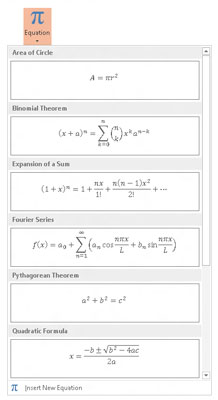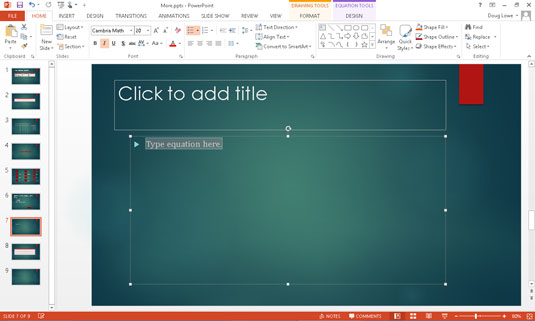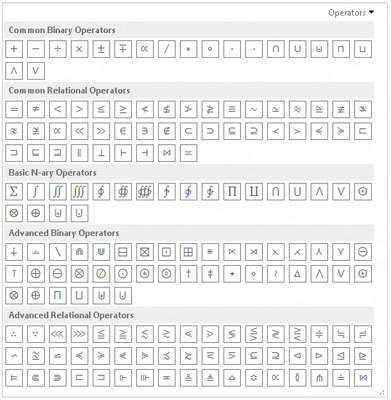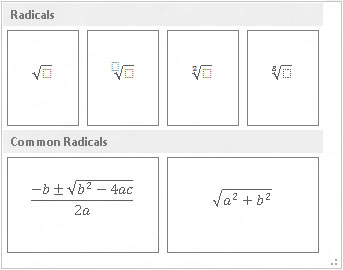You can create some pretty cool-looking and complicated equations by using PowerPoint 2013’s handy-dandy Equation feature. You wouldn’t even consider using ordinary text to try to create these equations, but they take only a few minutes to create with the Equation tool.
To add an equation to a slide, follow these steps:
Click the Insert tab of the Ribbon.

Then click the Equation button to reveal the gallery of equations.
If one of the preformatted equations in the gallery meets your needs, select it. Otherwise, select Insert New Equation found at the bottom of the gallery.

The rest of this procedure assumes that you’ve chosen to insert a new equation. A placeholder for the equation appears in the slide, and the Equation Tools Design tab appears on the Ribbon.
Start typing your equation.

PowerPoint watches any text you type in an equation and does its level best to figure out how the text should be formatted. For example, suppose you enter the following: a = (b + 2c) / 2b. When you press Enter, PowerPoint formats the equation automatically, as shown.
If you type the letter x, for example, PowerPoint assumes that you intend for it to be a variable, so the x is displayed in italics. If you type cos, PowerPoint assumes that you mean the cosine function, so the text is not italicized.
To add a symbol that’s not on the keyboard, use one of the buttons in the Symbols section of the Equation Tools Design tab.

The Symbols section contains a gallery of mathematical symbols most of which only Robert Oppenheimer could understand. To use this gallery, first click the More button in the bottom-right corner of the Symbols section. Then choose the symbol category from the drop-down menu that appears at the top of the gallery.
For example, the figure shows the Operators gallery. Additional galleries contain basic math symbols, Greek letters, negated relations, and other obscure symbols.
To create symbols stacked upon each other in various ways, use the controls in the Structures section of the Equation Tools Design tab.

Each button in the Structures section reveals a gallery of structures that you can use to create equations with stacked symbols. Most structures include a symbol and one or more slots, in which you type text or insert other symbols or other structures.
For example, this figure shows the gallery of templates that are displayed when you click the Radical button. These structures let you insert a square-root sign along with slots in front of and inside the sign.
When you’re done, click outside of the equation to return to the slide.






